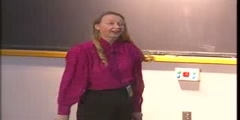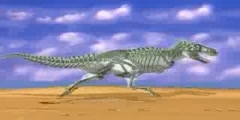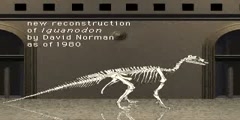Lec 25 - The Civil War and Reconstruction Era
The Civil War and Reconstruction Era, 1845-1877 (HIST 119) This lecture focuses on the role of white southern terrorist violence in brining about the end of Reconstruction. Professor Blight begins with an account the Colfax Massacre. Colfax, Louisiana was the sight of the largest mass murder in U.S. history, when a white mob killed dozens of African Americans in the April of 1873. Two Supreme Court decisions would do in the judicial realm what the Colfax Massacre had done in the political. On the same day as the Colfax Massacre, the Supreme Court offered a narrow reading of the 14th Amendment in the Slaughterhouse cases, signaling a judicial retreat from the radicalism of the early Reconstruction years. The Cruikshank case, two years later, would overturn the convictions of the only three men sentenced for their involvement in Colfax, and marked another step away from reconstruction. Professor Blight concludes with the Panic of 1873 and the seemingly innumerable political scandals of the Grant Administration, suggesting the manner in which these events encouraged northerners to tire of the Reconstruction experiment by the early 1870s. 00:00 - Chapter 1. Introduction: The Regression of Revolution 03:46 - Chapter 2. Southern Reactions to the Fifteenth Amendment 10:46 - Chapter 3. The Slaughterhouse Cases and their Impact on the 14th Amendment 18:44 - Chapter 4. The Colfax Massacre and the Cruikshank Case 31:54 - Chapter 5. The Panic of 1873 and Scandals within the Grant Administration 44:04 - Chapter 6. The Ku Klux Klan and Conclusion Complete course materials are available at the Open Yale Courses website: http://open.yale.edu/courses This course was recorded in Spring 2008.
Video is embedded from external source so embedding is not available.
Video is embedded from external source so download is not available.
Channels: Others
Tags: Colfax Massacre Cruikshank Mississippi Plan Shotgun Rule Slaughterhouse Cases
Uploaded by: yalecivilwar ( Send Message ) on 01-09-2012.
Duration: 52m 20s
Here is the next lecture for this course
Lec 21 - Andrew Johnson and the Radicals: ...
50:44 | 3581 viewsLec 24 - Retreat from Reconstruction: The ...
50:03 | 2430 viewsLec 26 - Race and Reunion: The Civil War ...
51:42 | 2700 viewsChemical Science - Breakdown of Octet Rul ...
50:10 | 16610 viewsLec 1 - Introductions: Why Does the Civil ...
43:07 | 3321 viewsLec 23 - Black Reconstruction in the Sout ...
51:21 | 3537 viewsLec 20 -Constitutional Revolution and Civ ...
49:47 | 2619 viewsLec 11 - Slavery and State Rights, Econom ...
50:18 | 3542 viewsLec 18 - - War So Terrible: Why the Union ...
50:32 | 2945 viewsLec 20 - Wartime Reconstruction: Imaginin ...
48:35 | 2694 viewsLec 27 - Legacies of the Civil War
49:16 | 2583 viewsLec 9 - The Mixed Regime and the Rule of ...
46:13 | 2903 viewsReconstruction of Iguanodon
00:12 | 7602 viewsReconstruction of Iguanodon by Louis Dollo
00:26 | 6172 viewsRight Hand Rule
00:10 | 7894 viewsNo content is added to this lecture.
This video is a part of a lecture series from of Yale















